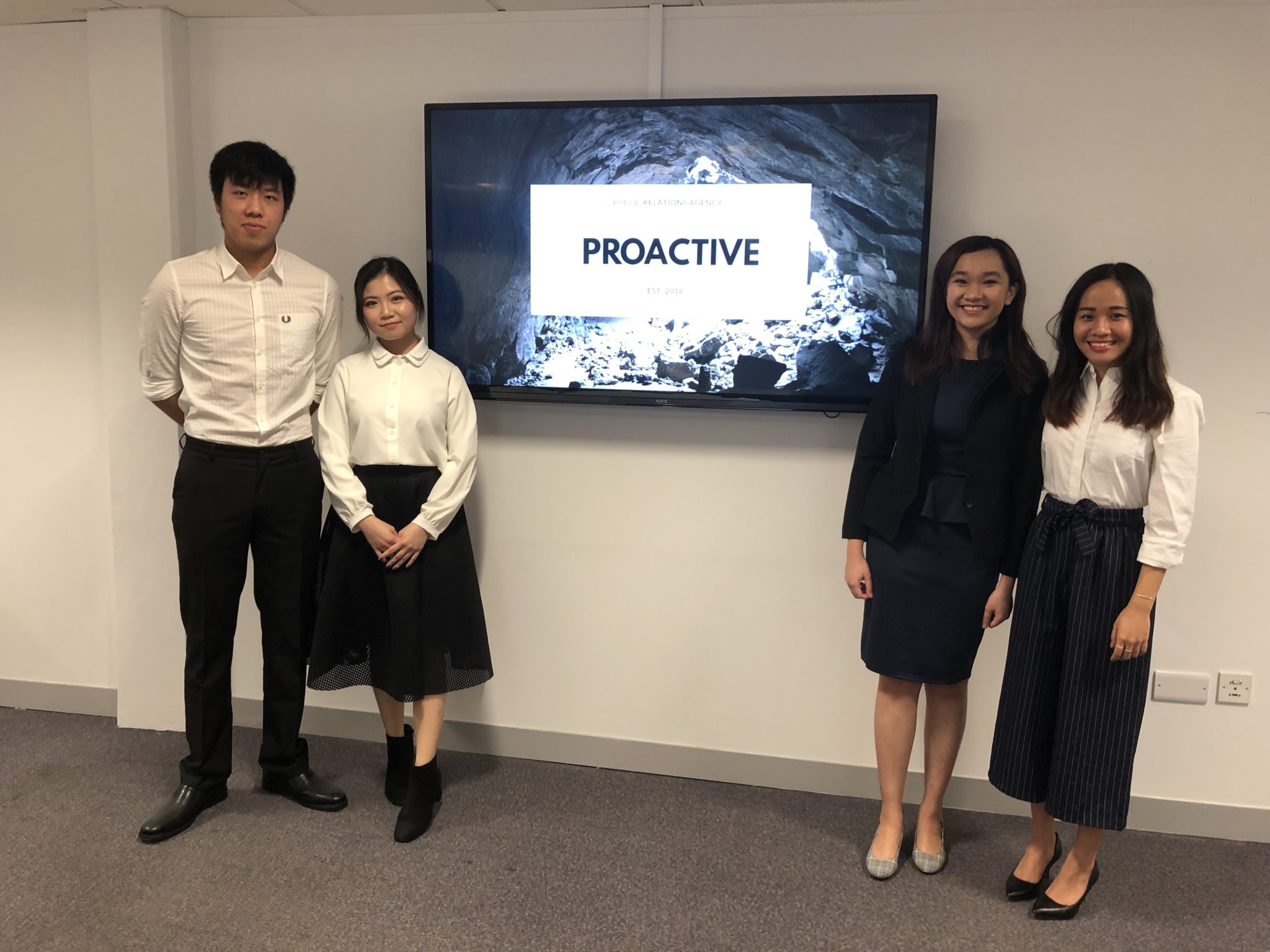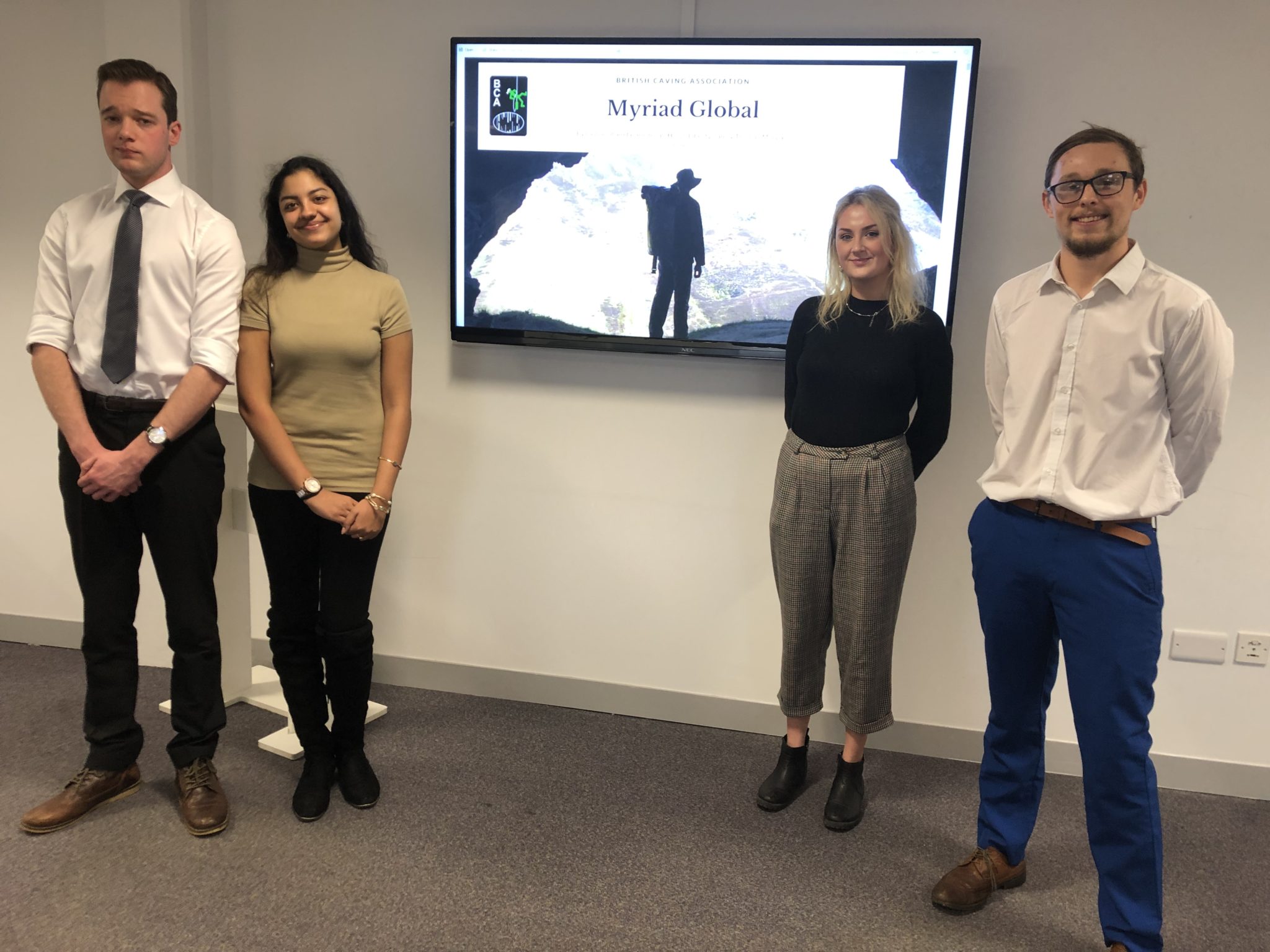
Third year PR students at UWE Bristol were asked to come up with ideas for raising the profile and diversity of the British Caving Association (BCA) in the wake of the Thai rescue. Darkness Below editor and UBSS member Linda Wilson reports back on the second week of presentations and is surprised to hear that not everyone sees the rescue story as positive.
You’d imagine that the success of the Thai cave rescue was seen from all sides as something overwhelmingly positive, wouldn’t you? After all, it had the lot – drama, heroism and a happy ending. Turns out that not everyone was convinced …
A group of final year PR students at the University of the West of England in Bristol took an in-depth look at British caving from an outsider’s point of view as part of an exercise in pitching to a client. They were asked to imagine that they were pitching for a contract with the BCA and that the BCA’s aims are to raise a positive profile for caving, attract young people from diverse backgrounds and improve access to and conservation of caves. The students’ task was to prepare a public relations strategy that would support the achievement of these aims.
The presentations from the first week of this exercise have been looked at by David Rose. I was able to attend both weeks, but will concentrate here on some overarching themes and the two presentations from the second session.
First up were Myriad Global, who led with the need to start young, targeting the 10-25 age group. The students made a great point that fear of darkness and claustrophobia is learnt not inbred. They had planned a two-year campaign, targeting schools and universities, and one of the first things they wanted to do was dispel any negative impressions left by the Thai rescue, pointing out that, in their words, ‘danger sticks’.
That took me by surprise. As a caver, I’d seen the success of the rescue as a huge positive for the sport. Cavers were heroes. What I hadn’t done was look at the rescue from the point of view of an outsider, where coupling the words cave and rescue so strongly together had, in many people’s eyes, left a perception that divers were heroes but that cavers were the people who had been in need of rescuing. That negative perception was a theme running throughout all five presentations and was a useful reminder that not everyone sees things the way cavers do.

The first group identified as strengths the fact that caving is self-funded and cavers are in general passionate about their hobby. The weaknesses were seen as a low social media and website presence, with not enough information on where people can cave. The group felt that in the aftermath of the Thai rescue there would need to be a great emphasis on how safe caving is. They pointed out that the organisation needed to consider where it was now, where does it want to be and how will it get there, looking at objectives over six months, one year and two years.
They suggested visiting schools, and also putting on 3D cave visits in the hope of attracting people to indoor caving first, mindful here of the popularity of indoor climbing walls. Interestingly, none of the groups discovered the existence of the BCA’s artificial cave. They felt the BCA’s newsletter needed pushing as only eight per cent of members have signed up to received it. Other ideas included partnering with prominent influencers such as Bear Grylls (I kept a commendably straight face when he was mentioned!) and Go-Pro.
On the subject of social media, the group recommended revamping the website and the Facebook pages (making use of sponsored posts), creating an Instagram account, and working on Search Engine Optimisation (SEO) as the BCA does not come high on searches related to caving. In the same vein, the group had not found its way to the excellent New to Caving site, which suggests that visibility is lacking here too. In fact, none of the five groups of media-savvy students had found it.
One of the group’s more radical suggestions was that as landowners are one of the most influential stakeholders in British caving, the BCA should create a separate body for them within the organisation, invite them to discussions and ‘treat them as part of the family.’
Their emphasis was on putting over the message that caving is accessible to everyone and they felt it was important for there to be free membership for students.
The second group, Proactive, also felt that the Thai rescue had created a negative perception of caving. In general, the perception they had taken away of the BCA and cavers in general were very similar to those of the first group, with comments being made on low social media presence and low reach to the public. They advised that the BCA needed to know its way around the media and use that to its best advantage.
Proactive suggested a three-month summer PR campaign called Let’s C.A.V.E. in which the capital letters stand for Caves Are Very Exciting and they produced a poster to be used in this context. Their campaign was aimed at those in the 15-25 age group, as they had gained the impression that most cavers fell into the 30-50 age bracket. However, they did make the point that as most cavers have a break while they start a family, that they should be encouraged to start caving again at the appropriate time.

They suggested creating a Let’s Cave virtual reality roadshow as 90 per cent of the input to the brain is visual. This should create an immersive experience, stressing the beauty of caves, and create an interactive roadshow. They also came up with the idea of developing a cave-based conservation game and partnering with the gaming community to create awareness of this. They also suggested the creation of an Instagram account and flagged up caver and cave diver Christine Grosart as an important influencer in this field who has a good following on social media. Their view was that the campaign should stress the qualities that caving fosters, stressing trust, leadership, resilience and teamwork. The success of the campaign would be evaluated against a change in perceptions evidenced by audience testimonies, media portrayal and website traffic.
Watching all the presentations was a fascinating experience, and was a salutary reminder that ‘outsiders’ see our community in a different way to how we perceive ourselves. I don’t know of any cavers who thought that the Thai rescue would have created a negative impression of the sport as – for once – cavers were in the limelight as heroes. But in the eyes of five groups of very diverse young people it was divers who were the heroes and cavers that needed rescuing. The emphasis on better web presence and better use of social media came as no surprise, as cavers tend to be interested in caving rather than sitting around on their phones all the time (try that in the Hunters and see where it gets you!)
What the experience taught me, I think, is that cavers need to spend more time looking at ourselves through the eyes of others and that the BCA should blow its own trumpet a lot more. There is a lot going on in the BCA, but its work needs to be made more visible both to cavers and the general public.
Correspondent: Linda Wilson
